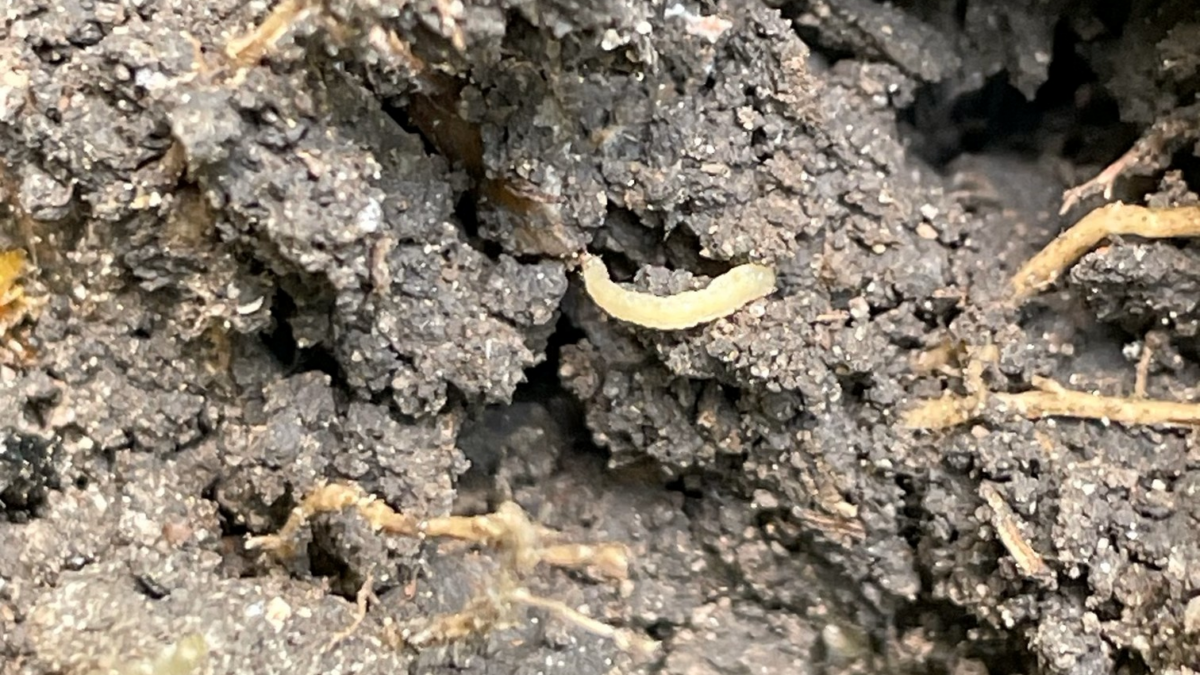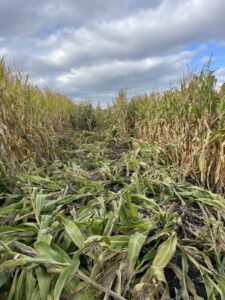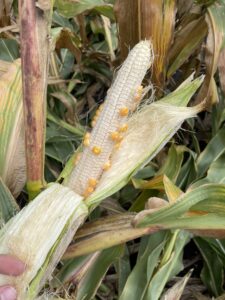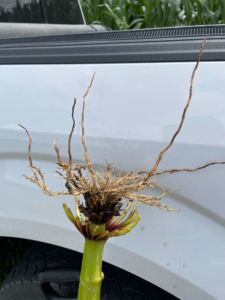Is Your Farm Prepared if Corn Rootworm is a Problem in 2024?

Undoubtedly, the No. 1 topic of conversation since last summer has been corn rootworm. For many regional farmers with rotated acres, it is the first time they have seen this problem.

Compounding factors proved to be a big problem for many growers across the region. Increased number of insects, drought, warm winters and corn-on-corn all played a factor.
We saw corn rootworms everywhere from central Minnesota all the way west to Aberdeen, S.D. For northern growers utilizing good rotations, this is not the norm. The most significant hotspot I encountered last year was near Rothsay, Minn. With very little corn-on-corn in the area, seeing fields laid down all over was especially concerning.
I believe multiple factors were to blame. First, the area saw more corn-on-corn planted than we have seen since 2012. Second, extended diapause played a role, and although some research has been done in the past, more information will be coming soon. Bruce Potter from the U of MN at Lamberton told me that he and other colleagues will be conducting research in Minnesota as it is currently unclear to what extent these beetles overwinter. It should be noted that the northern beetle can handle colder temperatures for overwintering, and they also tend to move a much greater distance than the western beetle, making them more challenging to track.
A third factor contributing to increased corn rootworm was the lack of cold soil temperatures in both of the last two winters, along with early snowpack in December. At Rothsay, the soil temperatures in 2022-23 never dipped below 32 degrees at 8”. In Fargo, soil temperatures were below 25 degrees for only 3 days in 2022-23 compared to 13 days in 2021-22 (NDAWN). These warm temperatures likely accounted for no beetle mortality.
The last significant factor was the drought conditions of 2023. Dry and warm conditions in late May and early June were perfect for these small worms to emerge. The slightly earlier-than-normal emergence allowed the beetles to attack the plants when small and unable to recover from the feeding. Plants would have recovered much faster with adequate rain, leaving fewer visual symptoms.
It concerns me how deep the adults will lay their eggs in dry conditions. Typically, the eggs are laid from 2-4”, but with the dry weather and cracks in 2023, they may be found as deep as 8-12.”
Getting soil temperatures low enough to kill the eggs at that depth is more difficult. Last August and September, we saw those kinds of dry conditions where cracks were 4” wide and multiple feet deep before the fall rains came in September. That is the timeframe when most of the eggs were being laid.
It is hard to say how much mortality we will have from the winter of 2023-24. While I can’t find a chart showing temperature vs. duration/mortality, I have to believe that temperatures below 20 degrees resulted in some mortality. The longer your temps stayed there, the better.

Silk clipping was also a problem that impacted pollination.
It is my own observation, but I believe the cold temps are why we haven’t seen major corn rootworm outbreaks this far north in the past. However, we will always be on the fringe for rootworm damage.
Another condition that can help reduce the beetle population is when we experience saturated conditions in June when the small worms are emerging. Although saturated conditions make spraying difficult, they also help keep the beetles in check. My bottom line is that we will not see significant rootworm beetle outbreaks in our climate with good crop rotation. However, our entire area will always be at risk with corn-on-corn. With plenty of residue on the ground insulating soils where the rootworm overwinter, corn rootworm will always be a problem.
I strongly urge you to pay attention to changes on your farm and be aware of the risks.
I sincerely believe 2023 was an anomaly with its high corn rootworm numbers.
- In our northern climate, I do not believe corn rootworm will be a problem in rotated acres regardless of the northern beetle’s extended diapause.
- Two winters with early snowpack resulting in little to no winter mortality, along with dry springs during egg hatch and no rain to cause spring mortality, have caused inflated levels across the region.
- Growers with rotated acres may still see problems persist from the more mobile northern beetle when neighboring fields are planted to corn-on-corn. Keep an eye on these areas.
- 2023’s drought conditions slowed plant growth dramatically, exposing the damage occurring. The plants should have outgrown these injuries with normal, sufficient rainfall, even at moderate populations.

Root feeding was also a problem that limited nodal root growth, standability and yield. Warm temperatures led to early emergence of the worms and drought led to slow recovery from injury in 2023.
So, what should you do in 2024?
- In Moderate-to-High Pressure Areas: If you are planting corn-on-corn for 3+ years or corn into a problem field from 2023, I recommend using a SmartStax hybrid or one with a below-ground trait.
- In Low-to-Moderate Pressure Areas: This is probably the hardest one for me to give advice on, as it varies so much from field to field. Conversations with farmers have ranged from suggesting a SmartStax hybrid to doing nothing. If you have rotated acres but still experienced a first-time problem in 2023, I would shoot for somewhere in between. An insecticide like Capture works okay but may not keep up under heavy pressure. Areas to our south have experienced success with products like Aztec, Force and Index, but they can be dangerous to handle.
- Monitor any suspect fields closely this summer!











